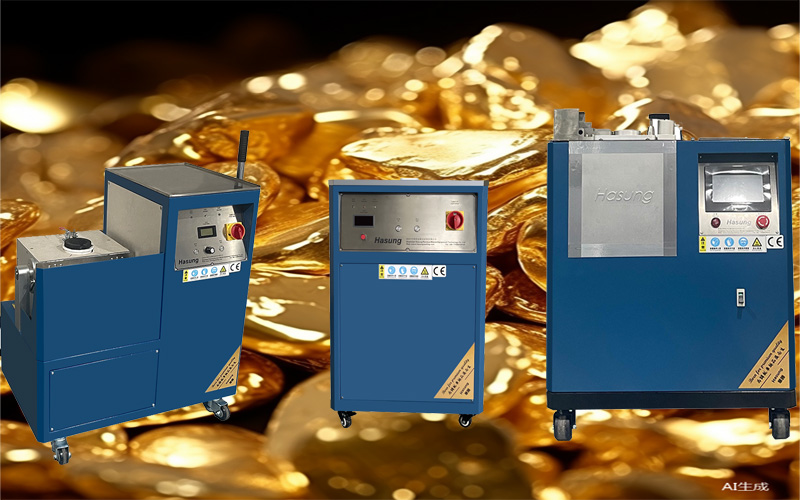Title: “Selecting the Best Induction Melting Furnace: A Comprehensive Guide”
Induction melting furnaces are essential equipment for various industries including metal casting, casting and manufacturing. There are several factors to consider when choosing the right induction melting furnace for your specific needs. From capacity and power requirements to efficiency and cost-effectiveness, making the best choice can significantly impact your operations. In this comprehensive guide, we’ll explore the key considerations for choosing the best induction melting furnace and provide valuable insights to help you make an informed decision.

Capacity is one of the most critical factors to consider when selecting an induction melting furnace. The furnace capacity should match your production requirements to ensure optimal performance. Whether you need to melt small batches or large quantities of metal, choosing a furnace with the right capacity is crucial. Also, consider the type of metal you want to melt, as different materials may require specific furnace capacities and configurations. By accurately assessing your capacity needs, you can avoid underutilization or overloading of your furnace, thereby increasing productivity and efficiency.
Power requirements play an important role in the performance of an induction melting furnace. The furnace’s power output should be compatible with the energy supplies available at your facility. It is critical to evaluate the electrical infrastructure and determine whether any upgrades or modifications are needed to meet the furnace’s electrical needs. Additionally, consider your furnace’s frequency and voltage requirements to ensure seamless integration into your operation. By evaluating your power requirements beforehand, you can avoid potential problems and ensure smooth operation of your induction furnace.
When selecting an induction melting furnace, efficiency is a key consideration. Look for features and technologies that increase energy efficiency and minimize heat loss during the melting process. Advanced insulation materials, temperature control systems and optimized coil designs help increase efficiency and reduce operating costs. Additionally, consider the furnace’s overall performance, including its ability to achieve fast melt cycles and consistent results. Investing in an efficient induction melting furnace can lead to long-term cost savings and increased productivity.
Reliability and durability are important priorities when choosing an induction melting furnace. Look for a reputable manufacturer with a track record of producing high-quality, reliable equipment. Consider the furnace’s build quality, materials used, and overall construction to ensure its longevity and performance. Additionally, assess maintenance requirements and spare parts availability to support continued operations. Reliable and durable induction melting furnaces minimize downtime and maintenance costs, helping to achieve uninterrupted production processes.
Cost-effectiveness is an important consideration in any investment in industrial equipment, including induction furnaces. While the upfront cost is important, it is also critical to evaluate the long-term value and return on investment that the furnace provides. Consider factors such as energy efficiency, maintenance requirements and potential for future upgrades or expansions. Additionally, evaluate the total cost of ownership, including operating expenses and any additional features or capabilities that might justify a higher initial investment. By weighing the cost-effectiveness of different furnace options, you can make an informed decision that fits your budget and operational goals.
Safety features and compliance with industry standards are factors that cannot be ignored when choosing an induction melting furnace. Prioritize furnaces with advanced safety mechanisms such as overheating protection, emergency shutdown systems, and comprehensive safety protocols. Additionally, make sure your furnace complies with relevant industry regulations and standards to keep personnel safe and comply with legal requirements. Investing in a safe and compliant induction melting furnace is critical to creating a safe work environment and mitigating potential risks associated with metal melting operations.
Customization and flexibility are important considerations when choosing an induction melting furnace. Look for manufacturers that offer customization options to customize the furnace to your specific requirements. Whether adjusting the furnace’s capacity, integrating specialized features, or adapting to unique production processes, the ability to customize a furnace can significantly enhance its suitability for your operation. Additionally, consider the potential for future upgrades and expansion to ensure the furnace can adapt to changing production needs. By prioritizing customization and flexibility, you can invest in a furnace that is exactly what your operation needs.
In summary, choosing the best induction melting furnace requires a thorough evaluation of a variety of factors, including capacity, power requirements, efficiency, reliability, cost-effectiveness, safety, and customization options. By carefully evaluating these considerations and conducting thorough research, you can make informed decisions that meet your production needs and operational goals. Ultimately, investing in the right induction melting furnace can lead to increased productivity, cost savings, and long-term success for your metal melting and casting business.
Post time: Jul-02-2024











